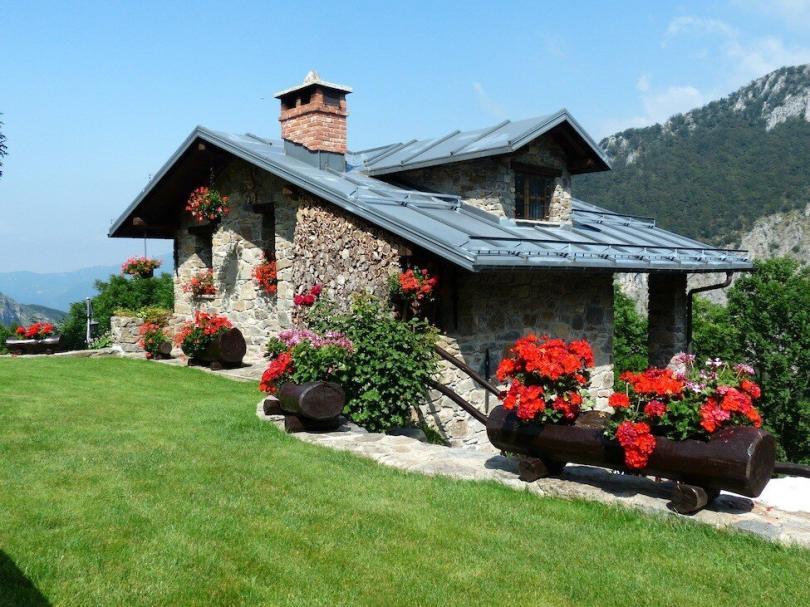Our homes are supposed to be this haven of safety and protection that we all strive to build, but at times, things change our indoor conditions for the worse, without us even noticing them. The only way to be aware of those changes is to be aware of the signs they present. At other times, even when a house maintains a healthy indoor environment, there are ways to improve upon it, which could end up making a big difference over time.
A lot depends on the domicile’s location, weather conditions, inhabitants, etc. but mostly, it’s all about awareness, realization and consequent action. So, without further delay, let’s now get into some of the more relevant and important discussions that could help a lot of homeowners build healthier indoor living conditions for themselves and their families.
Assessing the Location: What are the Common Problems Associated with It?
Understanding, knowing and assessing the location is an extremely important part of maintaining a healthy home, because the measures you will need to take will be based primarily on the climatic conditions.
Assess your location first to find out what are the most common types of problems that homeowners face in these parts. This is a particularly potent piece of advice for those that have just moved into a new section of the country. Talk to your neighbors and contractors about what to expect, use the internet’s mighty power to find area-specific information, and then act on it.
To put things into better perspective, let’s use the Golden State as an example, especially since it has one of the most homogenous climates in the country, making it easier to somewhat generalize the discussion and not limit it to just one city or the other.
California is a bright, sunny region that happens to be among the top ten healthiest states in the United States, but homes here do experience frequent roofing problems. Part of what makes the state of California healthy is its sunshine of course, but that same sunshine and heat can also weather through a roofing installation quite quickly if it has not been adequately reinforced.
If you have just moved to California, or in case your old house needs a new roofing installation, try to get a consultation from an Owens Corning Platinum Preferred Contractor if you can. Semper Solaris, as both a Platinum Preferred Contractor and a local roofing company, have the knowledge, expertise and most importantly, the experience with all aspects of the Californian weather conditions that a roof has to endure throughout its lifetime here.
Their total roofing installation package comes complete with heat-resistant underlayment, waterproofing barriers, starter shingles, hip and ridge shingles, insulation, ventilation and optional solar panels for those that want to maximize the sunshine overhead and save money by converting some of that heat into electricity.
Protection against heat, water damage and stormy conditions is priority for roofing here in California, which will not be the same if you are reading this in New York of course, because piling snow on the rooftop changes the game completely. Therefore, an assessment of the weather conditions is key to making your home a safe, healthy place, free from the harmful impacts often left by the elements during harsh climatic conditions.
Assessing the Symptoms: Are There Any?
A secret breach in the health standards maintained inside a home will often present itself with subtle symptoms, which you will need to be aware of in advance to suspect the culprit and begin your investigation.
Keep in mind that assessing local weather conditions will help you narrow down the suspects as some health concerns are more common in certain areas of the US than others. For example, California, Texas and Ohio have some of the worst mold problems in all of the US, so any home in these states will be more prone to seeing mold growth under the carpets, in between the wall and the wallpaper, underneath the tiles, as well as in various other hidden, moist and dark sections of the house.
If you or anyone in the family have been experiencing increased skin allergies, sneezing, hay fever, frequent colds, general respiratory discomfort, etc. while living in the same house, it’s time to look for mold, as these are all common symptoms of mold allergy.
Understand that looking for mold and clearing it out are not the same, because certain species of the fungus can be absolutely deadly or even carcinogenic. Wear your gloves and mask before beginning to look for the mold growth, which is most commonly found in or near gutters, water damaged roofs and walls, bathroom flooring, under the kitchen sink, basements and attics.
If you do find it, do not try to remove any of it on your own. Mold removal requires special training, because as soon as you try to remove the fungus, it will sprout invisible spores all around and on you. These spores will get stuck on your skin and hair, making their way to other parts of the house.
Aside from that, most of us do not have the experience or equipment to even detect how bad the mold growth is and whether or not it stretches beyond what can be seen or reached. Leave this one to the professionals.
Dust mites can also cause similar symptoms if you or anyone else in your family has a dust allergy. Then again, if your house is dusty enough to cause allergies, that in itself is a sign that the indoors is not being kept as clean as it should be kept. Regular vacuuming and cleaning with disinfectants is pretty much a standard procedure for any home in general, irrespective of the location.
Get a House Inspection Done, If You Have Not Already
When you are moving into a newly built home, the chances of harmful elements such as lead, asbestos, etc. being there are almost next to none, but in case you have been living in the same home for a while, which was built a long time ago, it’s time to get it inspected for lead, asbestos, heavy metals and other toxins, as soon as possible.
The same goes if you are about to invest in an old house somewhere, because failure to do so can have absolutely devastating health effects, ranging from growth abnormalities and respiratory diseases, to cancers and even acute and deadly poisoning.
A tricky bit to remember about lead in paint or even asbestos inside the walls is that you need to act before it’s too late and the symptoms begin to show themselves. At times, they may not even be actively harming the home’s inhabitants yet, but they are a ticking time bomb and nothing short of a professional inspection can reveal the potential toxins.
These are the main points to consider, and in one way or another, they are often interrelated. Additionally, pest infestations (certain flies, mosquitoes, rats, etc.) can also cause health breaches in the form of microbial diseases, which they may carry inside them and can be transmitted to us from their stings, bites, feces, urine, etc. If you do keep a clean house and eliminate sources of food and open water though, pests should not be a problem in most cases.



Leave a Reply